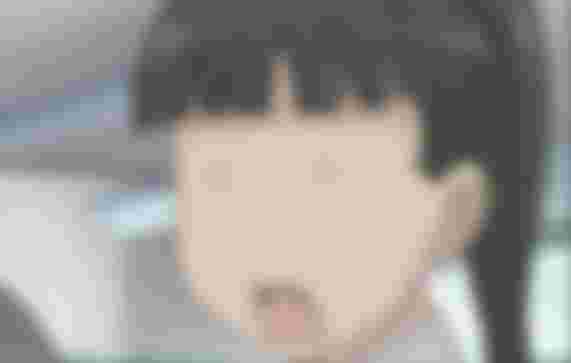Japan is a culture that is very attractive to all of the people around the world. It is also attractive for those who are antisocial, autists, unable to communicate even in their own language, and having various mental disorders. Normal people are minority among these language learners, and they have to slalom amongst these basement samurais. Once you learn how to avoid these turds, you can develop your japanese skills very rapidly. This tutorial will give you a brief explanation, what steps you should make to learn the language and reach the level of maybe a 6 year old first grader japanese, within two or three years.

How to start learning the language
People usually enter to some discord servers, however, those places will not get you anywhere. There are a few natives there, but they know nothing about how the langauge works (native people usually cant explain anything useful about the language for a total beginner, as now you could not explain anything about your own language to a foreginer who just decided to learn it). Other people are usually clueless beginners, the servers will be full of autists who learned all the kanjis like they are some sort of phone-books, but lacking the basics. And there also fraudsters, posing as some kind of language doctors, but they lack even the basics, they will not able to answer even basic questions, and they became agressive instead. The last bunch of people are the antisocial basement dwellers, who will not be useful, as their only function will be spitting at you for not knowing this/that/not developing enough fast/flexing their own knowledge, and even if they could, they will not help to you, and even if they do, they will give you artifically overcomplicated answers.
Then how actually start it
There is a prety great video tutorial family for beginners, called Japanese from Zero, made by George Trombley. You can watch his video tutorials up to maybe the first 100 episode, daily one of them. Be sure to actually digest what he says, before switching to the next video of him. If you fail to process a video, rewatch it next day, and if you still fail, rewatch it on the third day as well, before stepping forwards. His videos are freely available on Youtube:
(https://www.youtube.com/watch?v=dvCDcnM6Q5s)
Start watching anime
You should start watching anime, but by reading this, there is a chance you already watching anime (in original japanese language), and your goal is better understanding of anime. If you watch anime, try not to read the subtitles, try to understand what they say, and then scroll back, and only read the subtitles afterwards. This will help you to get used to phrases and the language itself.
Get japanese friends online
Start chatting with japanese people, build friendships with them. This could be difficult, as people in different country will use different services for their online lifes. So do not expect to find a lot of japanese person on westerner services. If you manage to find japanese friends, offer them something in exchange, like, teach them to your own language, or something else thats useful for them.
Read folk tale and manga
Some manga and folk tale tend to have easy japanese wording and lettering. You can read hentai art, or you can read child tales like Sarukani and such. At first, they will prety much destroy your brain after a few minutes, but slowly you will get used to it, and your brain builds the proper circuitry to be able to read these documents without getting tired too early.
All of this, in the same time
So do all of these listed above in the same time. This will take you probably more than a hour per day, so ensure you can allocate the time window to do all of these. You will have to keep this up for at least a month to have notable and long-lasting results. Once you have somewhat learned the language like this for a few months, then you can relax afterwards, and process further occasionally and slowly, as the basics of the language itself is already got hammered into your head properly.
How the letters work
The base of the japanese language is Hiragana. Hiragana is 45 curvy character, and it works similarly to the westerner ABC. One letter means one or two sounds. Its very easy to learn them, if you try to imagine them as items. Here is how hiragana looks like:

Imagine all the characters as the corresponding items, such as A as an Apple, i as two westerner i letters, and so on. What i have did to learn hiragana, was that i have imagined everything as the corresponding items. I was able to learn all the hiragana characters within a month. I was learning one or two new one every day, and the next day i always trained to recognize them. To do this, i have printed all the hiragana on papers, and tried to fill them out like some kind of mental game.

I was using a pen to write the meaning of all the characters, and after a month i was able to read all the characters in a text without too much problem, althrough i needed a few more months to be able to read the text fast enough. After learning hiragana, the next step is learning Katakana.
Katakana is similar to hiragana
Most of the katakana characters are similar to hiragana, some of them are different. Learning katakana took about one week for me, either due to my brain get used to learn these letters faster, or as they are very similar to hiragana, i was able to make a lot of shortcuts. Katakana caracters are usually used to write foreginer names, phrases, to describe effects. It is similar to hiragana in a way that the letters represent one or two european letters.

You can follow the similar trick with hiragana, imagine the characters as items, and then you can learn them very easily. Both hiragana and katakana have repeater-characters, and chibi-characters. If a repeater character is being written (tsu) then you double the next constonant when reading. If other chibi characters are being written, then those morph the meaning of the letters a bit. For example, cha in -chan has no hiragana, so you write it as ちゃん. (chi, chibi ya, and an n character).
European latin characters (romaji)
The japanese language also uses european letters. Corporation names, product names are usually written in romaji. Japanese people dont like reading in romaji, because they think on it as some kind of foreginer invasion force occupying their country. Despite of this, they use it even in some phrases, so do not be suprised if you see an european letter written after hiragana or katakana characters. For example, dom in domination will be just simply written as ドM.
Kanji
Kanji letters are coming from the chinese writing. Sometimes they have similar meaning and/or similar readout, sometimes, its different. Up to this point, the japanese writing worked very similarly to the European writing. However, the writing also uses kanjis. When reading about the not so fantastic world of kanjis, the online language shitlords will do everything to demotivate you from learning the language (its not like they could earn a penny from keeping the knowledge for theyself, as they are unable to communicate without being beaten anyway). They will write fantastic stories about how many things a kanji can mean, how one kanji can mean 100 things when used differently, but all of them are bullshit, and only exists in their autistic brains. So how kanji actually works then? A kanji character can work two ways.
Kanji working as letter
Kanjis usually work as letter, similarly to hiragana. So for example, the kanji for heavy (omo) is 重. The kanji for white (shiro) is 白. Now, there is a word in japanese language, called omoshiroi (interesting). This will be written with 重白い. As you can observe in this example, the kanji of omo will not mean heavy, and the kanji of shiro will not mean white. It will mean OMO and SHIRO. So it will mean the letter readout (pronunciation). This is how kanjis usually work (95% of the cases), you can just read them out, and they form the word for you. This means that japanese language is very compressed, it can give you back a lot of informations.
Kanji working as its meaning
In some cases, the kanjis will work as their meanings, and not as their readouts. For example, 昨日 (last + day) will mean yesterday. So in this group of words, the kanjis are being interpreted by their meanings, and not by their pronunciations (and the word will be different, in this case, yesterday means KINO, but written as 昨日 - last+day).
Kanji working as... potato
There are some other cases, where kanji works differently than these, but thats not your problem right now. Forget the horror stories some random demotivational people write to the internet about a random kanji can mean potato, sex, nuclear fusion in the same time, it will not happen, and even if such thing exists somewhere, you will never stumble upon them. Focus on the real and actual thing to learn the language.
OOOF, thats too many letters
Really? Lets calculate, if you speak english, thats only 26 letters... but thats wrong. You have 26 capital (ABC), and 26 non-capital (abc) letters. These are, however, only typewriter letters. When you use handwrite, your letters look differently. Thats another 26 capital, and another 26 non-capital letter. Then its not yet over, you have various signs to represent mood, or to modify the meaning of the text, such as .!?, and so on. You have numbers, and you have roman numbers as a celebracial method to display numbers. This allows you to read most of the english texts, however, in english, writing and spelling is different, basically various combinations of letters form various sounds (sh, or how an e character is being read out). And then you must also be able to read some foreginer characters out to understand the name of foreginer people living in your country, such as your czech-german neighbour Hülkerbörger Křehký, makes you to learn that ö is the combination of the oe sound, and so on. Basically we are already at a good 200-300 characters, so if you meditate on it, japanese isnt that bloated as you may have originally expected it.
Expose yourself to the language
Once you started to learn the basics, you can crawl into japanese conservations with your new friends, and you can start posting on japanese forums, debate them, talk them, just like you do in other languages. After a while, the ,,OH SO YOU ARE A KAKKOI FOREGINER, WHERE ARE YOU FROM'' as a first impression will switch into ,,WHY DONT YOU LEARN HOW TO WRITE PROPERLY, YOU RETARDED ELEMENTARY SCHOOL DROPOUT'', which will indicate that your skills was rapidly increased.
Agglutionation
Japanese is an agglutinational language (similar to Hungarian). Agglutination, in some extent, also exists in english (i would like not to bullshit too much about this topic, as i must admit, i have no clue about grammar as a science), but its far more extreme in the japanese language (but not as much extreme as in the hungarian language). So in english language, you can say: see, and the past tense is saw, but in japanese, there are far more way to morph the word, like there will be various forms if you see it, seen it, saw it, not saw it, will not see it, cant see it, can see it, depending of the polite or unpolite language being used (miru, mite, miteru, mita, mitakotonai, mitai, mienai, mitakunakatta, mitakatta, etc)... You dont really have to worry about these, your mind will pick them up quikcly after getting used to the language, and as its not so dramatical as in the hungarian language, where there can be 300 variations, your mind will be easily able to decode them after learning the basic words. At least pre-fixes are rarely used, if they even exists for that word.

Do not use the polite language in online communication
The desu-masu formulas - or the so called polite language - is somewhat extreley cringy when used in online forums, and chats. Do not use those, as that is only used in student-teacher, or employee-employer situations. Its a bit similar to the german ihnen/sie formula, you dont really want to actually use it despite of learning it. Of course you must understand the polite language too.
Do not talk too much about anime
For japanese people, anime is more like an export item. Do not try to talk with them always about anime, there are a chances they will not even know what you are talking about. Just like you dont want to talk with an italian about pizza and spagetti, and with an american about Nightmare on the Elm street and Jockey Ewing, just try to be normal. Japan is of course full of otakus, so you can find them if you really want to. Of course you dont have to fall on the other side of the horse, you dont have to know why a geisha commits a seppuku if she accidentally farts in the middle of a session, just for the sake of learning the language. When you are learning the language, then YOU ARE LEARNING THE LANGUAGE. Do not confuse the things!







The advice to read lots of manga and folk tales is a good one. Shounen manga in particular is great for beginners because of the furigana above each kanji!